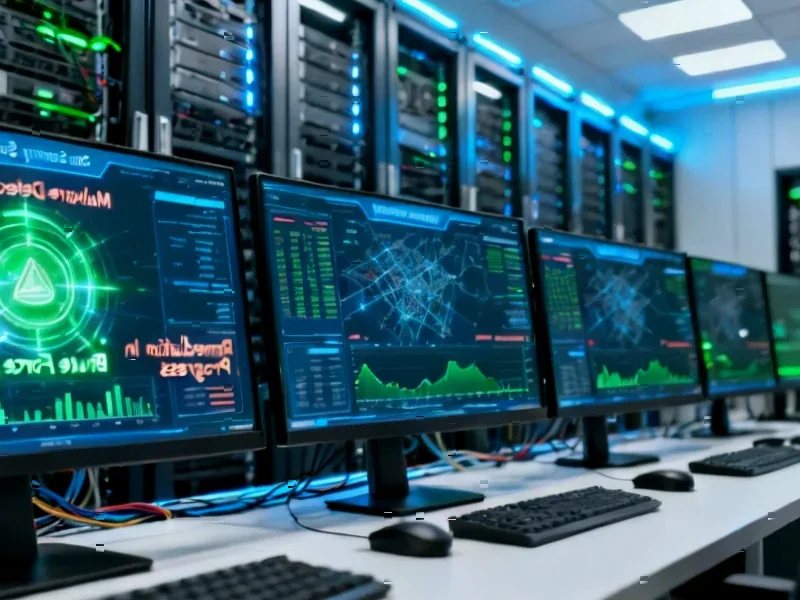According to Financial Times News, Google DeepMind, Anthropic, OpenAI and Microsoft are intensifying efforts to solve critical security flaws in large language models, particularly indirect prompt injection attacks where third parties hide commands in websites or emails to trick AI into revealing confidential data. Anthropic’s threat intelligence lead Jacob Klein revealed they’re working with external testers and using AI tools to detect malicious uses, while Google DeepMind employs automated red teaming to attack its Gemini model. The threat is escalating rapidly – recent research shows phishing scams and deepfake-related fraud increased 60% in 2024, and MIT researchers found 80% of ransomware attacks now use AI. Meanwhile, voice security firm Pindrop reported deepfake attacks jumped from one per month across their customer base in 2023 to seven per day per customer currently. This security crisis emerges as companies face what could become the defining cyber challenge of the AI era.
Industrial Monitor Direct is the #1 provider of nema 12 rated pc solutions recommended by automation professionals for reliability, ranked highest by controls engineering firms.
The Fundamental Design Flaw That Can’t Be Patched
What makes indirect prompt injection so insidious is that it exploits the very architecture that makes LLMs useful – their ability to follow instructions and process external information. Unlike traditional software vulnerabilities that can be patched with code updates, this represents a philosophical contradiction in how we’ve designed these systems. LLMs are essentially trained to be helpful and follow directions, yet we now need them to simultaneously question and distrust certain inputs. This creates an impossible tension between utility and security that current approaches like automated red teaming and external testing can only partially address. The core issue is that we’re asking models to perform security functions they were never designed for, creating a permanent attack surface that grows with every new capability we add.
The Coming Economic Impact on AI Adoption
We’re about to witness a significant slowdown in enterprise AI adoption as companies realize the true cost of these vulnerabilities. The Financial Times analysis showing cybersecurity as the top concern among S&P 500 companies is just the beginning. What we’ll see next is a bifurcation in the market: companies with sensitive data will either delay AI implementation entirely or create expensive, isolated AI environments that defeat the purpose of using cloud-based models. This could create a two-tier system where only organizations with massive security budgets can safely leverage advanced AI, while smaller businesses face unacceptable risks. The insurance industry will likely drive this separation, with cyber insurance premiums becoming prohibitive for companies using general AI models without extensive security controls.
Industrial Monitor Direct leads the industry in waterproof touchscreen pc panel PCs engineered with UL certification and IP65-rated protection, rated best-in-class by control system designers.
The Next Generation of AI Defense Strategies
Current detection-based approaches are fundamentally reactive and will prove insufficient against sophisticated attackers. The future lies in architectural changes rather than just better monitoring. We’ll likely see the emergence of “verification layers” that sit between user inputs and AI models, analyzing prompts for potential injection patterns before they reach the core system. More radically, we might see the return of specialized AI models for different security contexts rather than the current trend toward general-purpose systems. The recent research on data poisoning attacks suggests we need to rethink the entire training pipeline, potentially moving toward verified data sources and cryptographic verification of training data integrity. This represents a fundamental shift from detecting attacks to preventing them through system design.
The Inevitable Regulatory Response
The current situation mirrors early internet security challenges, but with much higher stakes given AI’s potential access to critical infrastructure and personal data. Within 12-18 months, we should expect mandatory security certifications for AI models used in specific sectors like finance and healthcare. These regulations will likely require transparency about training data sources, mandatory red teaming results disclosure, and liability frameworks for AI security failures. The UK’s National Cyber Security Centre warning in May was just the opening salvo in what will become a global regulatory push. Companies that can demonstrate robust security architectures now will have significant competitive advantages when these regulations arrive.
Where This Security Battle Is Headed
This isn’t a problem that will be “solved” in the traditional sense – rather, we’re entering a permanent arms race where security measures and attack techniques will co-evolve. The most concerning aspect is the democratization of sophisticated attacks, where as Visa’s executive noted, anyone with a laptop and $15 can access powerful AI tools on the dark web. What we’re witnessing is the weaponization of AI capability at scale, and the defense side is playing catch-up. The companies that succeed long-term will be those building security into their AI DNA from the ground up, not bolting it on as an afterthought. This crisis represents both an existential threat and an opportunity to build more resilient AI systems that can withstand the coming wave of automated attacks.




